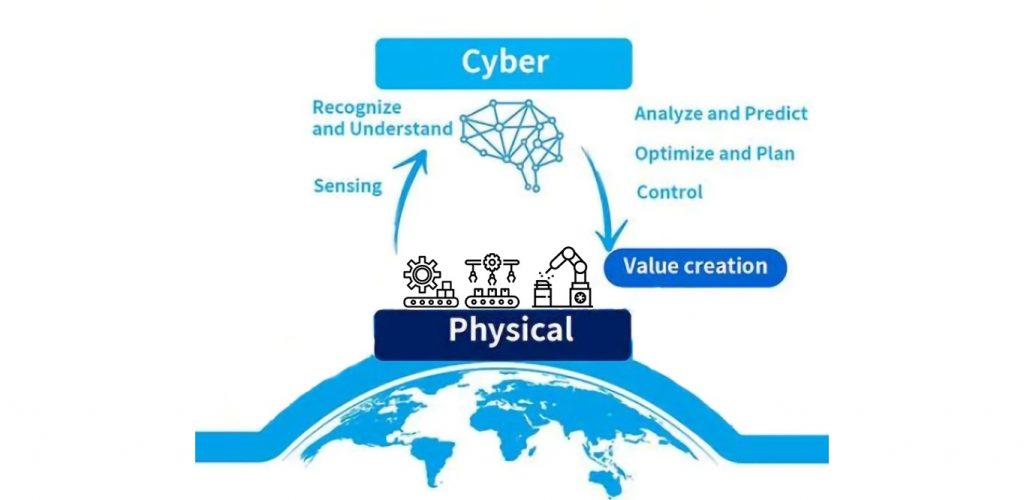Cyber-physical systems play a big part in the advent of Industry 4.0.
The digital manufacturing revolution going on is moving the approach from mass-production to mass-customisation. This means the consumers act directly on the definition of the production order and it is up to the factory to be more reactive.
How is it made possible? Plants have to adopt an agile manufacturing system that allows what we call production modularity. It designates the ability to switch rapidly from the manufacture of one product to another. In technical terms, this refers to high-mix low-volume manufacturing. A variety of products are produced in small batches.
How does it translate from a technical perspective? Connected sensors are present in all steps of the production process. Together with embedded micro-computers that are part of each production machine, they form cyber-physical systems (CPS). These systems are connected to:
- The real world (the factory)
- The virtual world (the Internet).

The cyber-physical systems connect these two worlds and are pillars of any flexible manufacturing system. They support the whole process by automating and enhancing:
- Production planning.
- Process control.
- Quality control.
- And more!
How cyber-physical systems optimise production line monitoring
More agile manufacturing brings huge concerns in terms of quality. There is no point in being able to switch fast from the production of product A to product B if the output is flawed. The capabilities of the cyber-physical systems answer this tension:
- Firstly, they monitor the production in real-time. We can also detects in quality at each step of the production line, and not only on the finished products (as it has been the case until now). For this reason, we say the quality control is inline.
- Secondly, the cyber-physical systems analyse the production machine non-stop. This allows in particular for predictive maintenance. The system warns the operator whenever the machine needs maintenance.
- Finally, the cyber-physical systems with their digital twin[1] can be used offline to:
– optimise the process in an automatic way,
– train operators to complex procedures,
– perform virtual commissioning which refers to the “practice of using virtual simulation technology to […] design, install or test control software with a virtual machine model before you connect it to the real system”[2].
Moreover, these features allow each production machine to be “Plug-and-Produced”[3] (“PnP”). This means workers can reconfigure production lines with minimum effort of production planning and machine tuning to achieve the desired product and the required quality.
In this regard, in DIMOFAC, we are developing different quality control modules based on the PnP concept of different technologies (3D scanning, vision systems, thermal images analysis, Ultrasound Testing) for a wide range of products and processes (injection moulding, laser welding, induction welding, assembly and bending) that will fully automate the reconfiguration of production lines.
By Ronan Le Goff, Researcher at IPC
[1] See How Digital Twins technology enhances the DIMOFAC solution.
[2] Source: What is Virtual Commissioning?
[3] See How Plug-and-Produce technology will automate production line reconfiguration in DIMOFAC.

